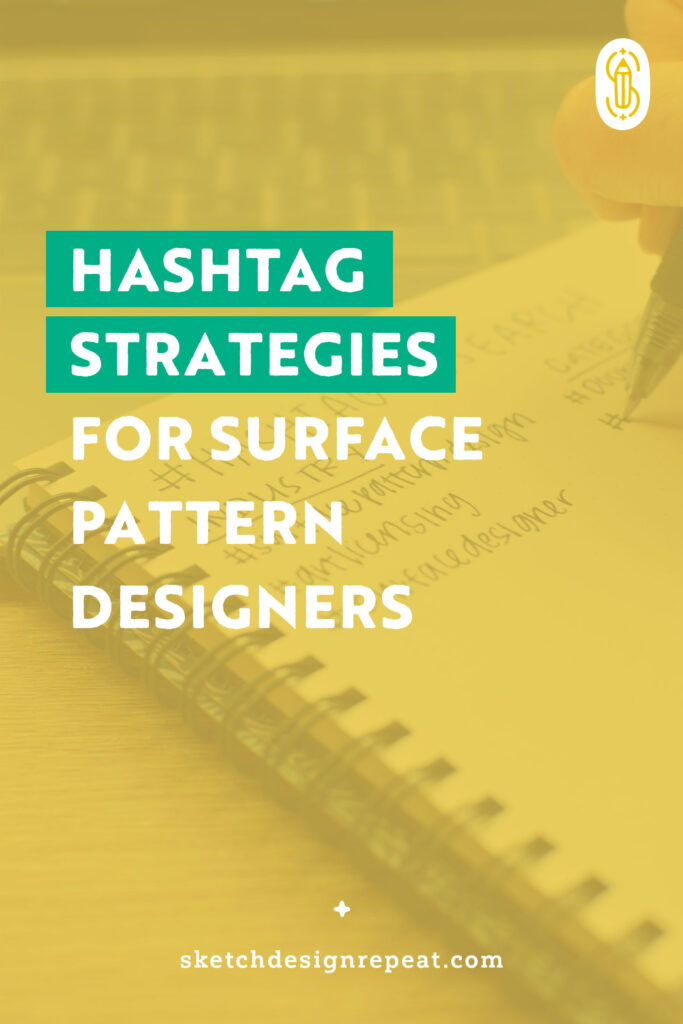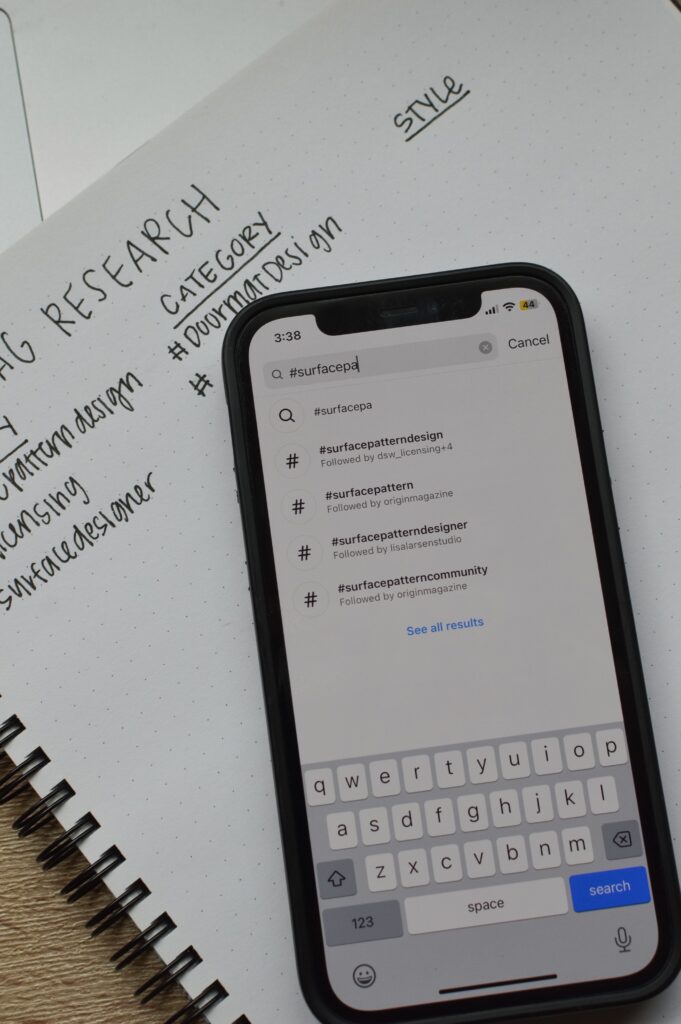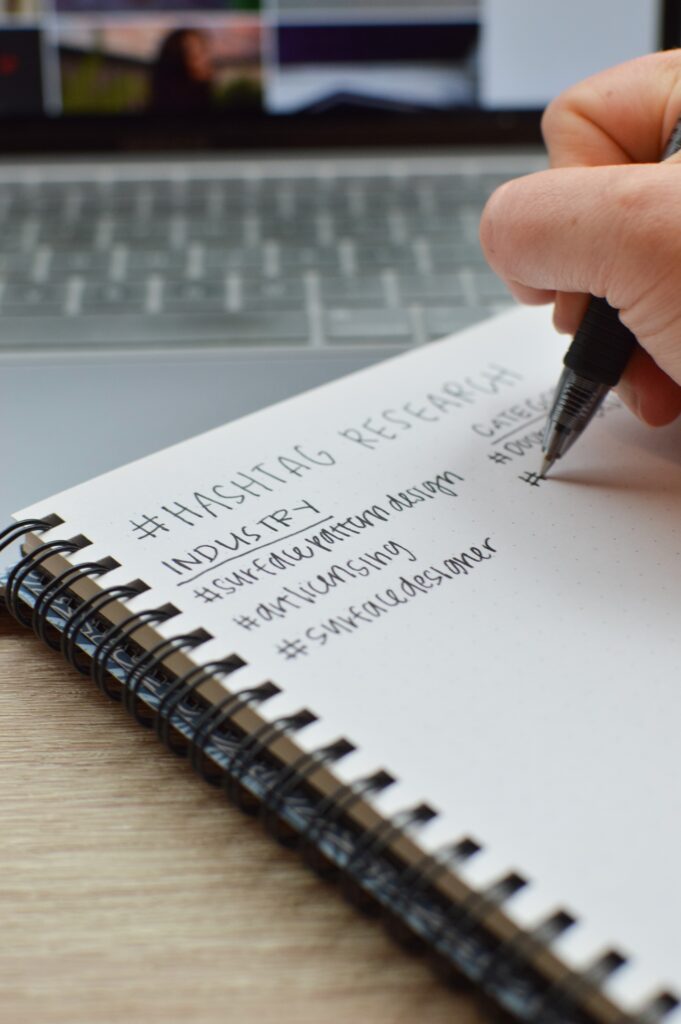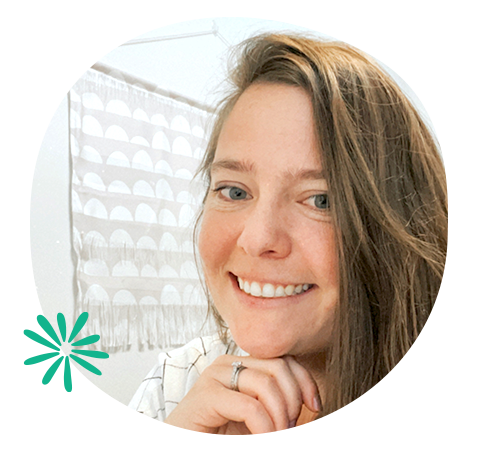While there will always be some debate on how many hashtags to use, or if they belong in the body of your caption (they do… we’ll get to it), there’s no doubt that hashtags can be valuable to surface designers on Instagram.
Hashtags can be incredibly important to visibility and discoverability. Not only can people follow hashtags on Instagram, but if you’re using the same hashtags as other content that someone is interacting with, Instagram’s algorithm is more likely to pull your posts into “suggested for you” posts or onto someone’s search page.
When used correctly, hashtags can tell Instagram more about the types of content you share and who it is for, just like using keywords on your website can help you rank higher on Google.

There are a few “rules of thumb” that don’t change when it comes to hashtags, no matter how the Instagram algorithm changes:
- You’re less likely to gain traction with extremely high use hashtags. (Later recommends aiming for hashtags with between 10k–200k posts.)
- Hashtags relevant to your content are more important than those that are not — for example, using #iykyk (if you know, you know) isn’t relevant to your pattern motif. If you want to be cheeky you can use it, but it’s not going to increase your reach!
- Using the exact same hashtags on every post might seem like an efficient use of time but isn’t really doing you any good in the long run, unless every post is exactly the same content.
- No matter what the debate is at any given time, put your hashtags at the bottom of your caption — especially if you’re using a free version of a scheduling platform you won’t have the ability to schedule your first comment, and you’ll likely forget to add hashtags more often than not (I recommend Planoly, and Sketch Design Repeat uses Later *affiliate link*).
Here’s my article detailing how to schedule your social media posts for Instagram if you’d like to read more about how I use Planoly.
How to identify effective hashtags
The point of using hashtags in promoting your surface pattern design business is to increase your reach in order for you to license your art (measuring reach for reach’s sake is great, but it doesn’t put money in the bank). This makes using the right hashtags more important than using more of them.
But how do you identify the right ones?
The right hashtags are the types of keywords your target audiences are searching with (both on and off Instagram) – I discuss this a bit in my article “Target Audiences: How They Can Improve Your Marketing and Portfolio.”
Surface pattern designers technically have two audiences, art directors and companies licensing your work, as well as end consumers who are buying the products they print on.
If the folks at a manufacturer are looking to add designs or plan a new collection and are looking for inspiration or prints, they’ll start by searching for:
- The type of motifs or themes they’re looking for
- The type of art that will work on their product for their end consumer
Let’s walk through an example using my end consumer (coastal loving individuals who may or may not live by the beach) and a target company (Entryways — I mean, how cool would that be since Shannon has worked with them as well!?!).
Starting with reaching my end consumers, my source of hashtags would be my own content: I tend to use hashtags like #coastalhomedecor and #coastaldesigns — they’re not overly saturated keywords and if someone in my target audience is looking to decorate their home, they’re looking for “coastal home decor.”

Next, my goal for my content is to get in front of an art director, so I’d add the hashtags #surfacepatterndesign and #artlicensing — these hashtags are followed by both art directors and licensing agents, so they can do double duty to get your work out there!
While you can’t see which hashtags an account follows, if you type a hashtag in to search you can see how many of your followers also follow that hashtag.
Finally, if I want to increase my chances of working with Entryways — or another doormat manufacturer — I’ll head over to their Instagram. Clicking through the posts of products that are relevant gives me an idea of what hashtags may help me find my way into their Instagram universe and connect my content to theirs.
Entryways often uses the tags #doormatdesign #outdoorliving and #entryways. While they often use the hashtag #pattern, I’d recommend ignoring that one as it has 17.3M posts, compared to #doormatdesign’s 26K.
Combining my content with knowing my target company/industry means that if I share a mock-up of a doormat featuring a coastal design, I would include the following hashtags: #doormatdesign #outdoorliving #coastalhomedecor #coastaldesigns #artlicensing #surfacepatterndesigner.
While this is a very specific example and may sound like it takes too much time per post, the principle can be expanded a bit into categories versus individual companies (and chances are, competitors are following each other).
Focusing on finding 7–10 hashtags that are relevant to a specific industry or category that you can use with related content means you can do this exercise occasionally rather than with every post.

I recommend having 2–3 lists of hashtags you can pull from for a post:
- Hashtags that fit your overall style and content pillars
- Hashtags for the product categories you’re targeting
- Industry specific hashtags.
Pulling from these for each post and adding a hashtag or two specific to the motifs of the art you’re sharing saves you time and ensures you’re consistently using effective hashtags. Most social media schedulers have some functionality to save hashtags, and I recommend using it as you start your hashtag optimization journey to make your life easier!
Once you’ve started consistently pulling from your hashtag bank, it’s time to test and learn. Head to your “analytics” on Instagram (in Settings) and look at your top posts over the past few months. You can look at each post and see Impressions from different sources.
Check out the ones that have higher numbers “From Hashtags” (note, higher is relative for your account size and average of total impressions per post) and see if there’s a pattern in the hashtags used. This can help ensure you’re on the right track, or it could be an indicator that you need to do some more research!
Side Note on Analytics: You can’t necessarily see which hashtags are strongest, so you’ll have to look for overlap. Additionally, you need to dismiss posts for things like design contests where you’re using a hashtag that is specifically for the contest, as that will skew your “From Hashtag” and Non-follower account visits due to the nature of how people interact with those types of posts.
Related Article: How to Grow Your Instagram with Purpose
Other ways to use your hashtag research to make your life easier
I’m a big fan of the “work smarter not harder” mentality, and if you’ve taken the time to research hashtags that are relevant to your target audience, these can become keywords for other aspects of your surface pattern design business.
Hashtags are essentially keywords with the pound sign in front of it. (Does anyone still call it a pound sign?!) And as I mentioned earlier, they work the same way on Instagram as keywords work on search engines.
This means that if you’re seeing great engagement with a hashtag like #coastalhomedecor, then you should work mentions of “Coastal Home Decor” into pages on your website to increase SEO (Search Engine Optimization). This is especially important when paired with “Surface Pattern Designer” or “Art Licensing” if a company is searching for new artists.
And speaking of SEO, you know who else is big on it? Companies selling products.
This means typing your hashtags into Google as keywords will likely help you identify new companies to pitch to (win win!). I recommend checking the first few pages of search results before moving on, since smaller manufacturers are often unable to outrank the big companies but are still using similar keywords!
More #hashtag questions? Let’s connect on Instagram (You can find me hashtagging over at CoastLStudio) or leave a comment below!

Written by Leah Keggi
Website: www.LeahKeggi.com
Instagram: @coastlstudio
Class: Surface Design Marketing: Creating Content to Grow Your Business
Leah Keggi is a Marketing Pro and Pattern Designer looking to bring a little vacation into every day with coastal inspired design! Her work has been featured on Today.com and on products at Target.com. When she’s not designing (or working in Marketing) you can find her reading, enjoying her husband’s cooking, or walking her pup!